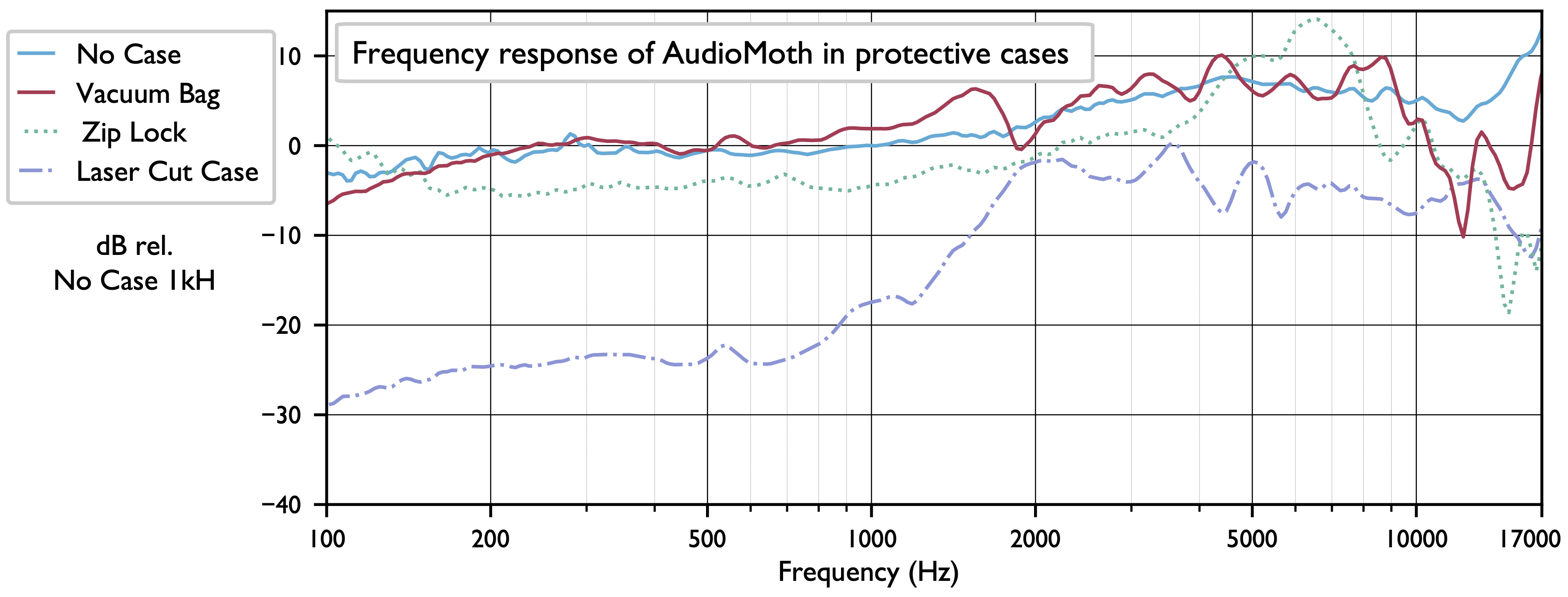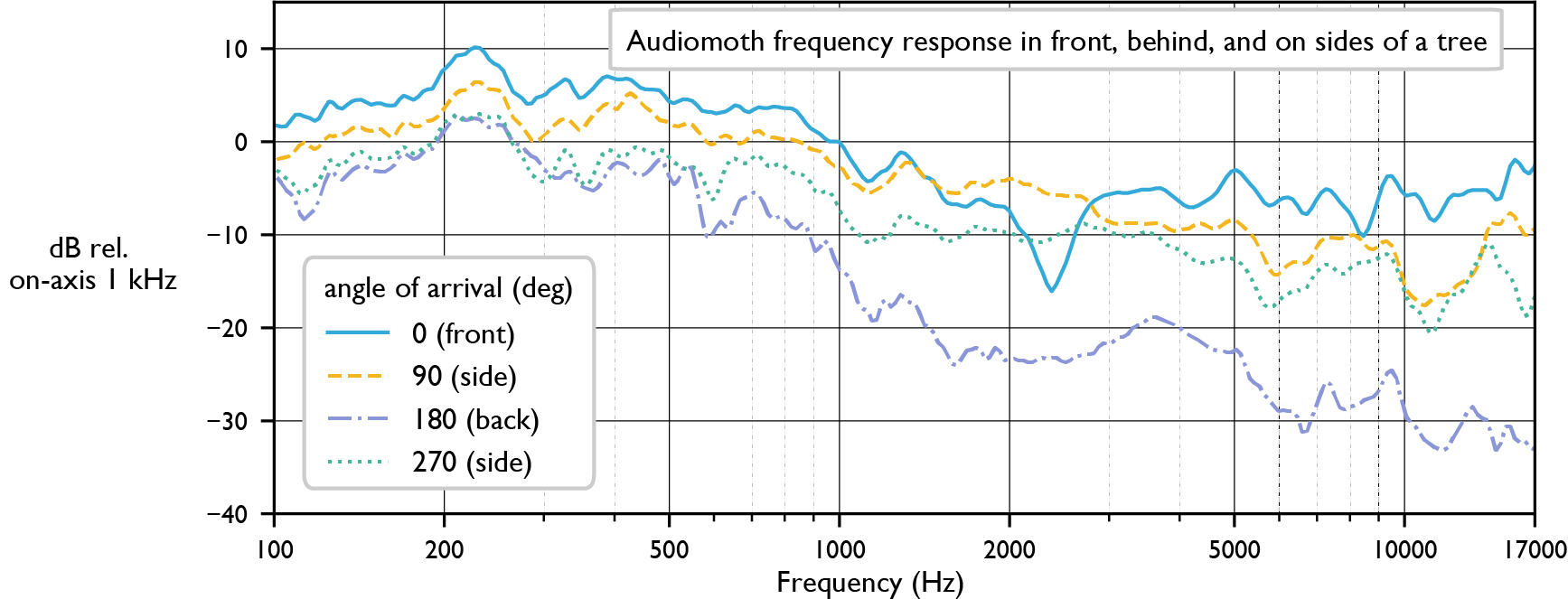About the AudioMoth Performance Testing report
This report characterizes the audio recording performance of the AudioMoth ARU with on- and off-axis frequency response curves and polar sensitivity charts. Metrics are reported for recordings in free space and in various protective housings. It includes tests from an open grassland environment and a mixed second-growth forest and reports the effects of strapping AudioMoths to trees of different sizes.
An Appendix provides additional tests of the Open Acoustics Devices injection-molded case and of the SongMeter Micro ARU by Wildlife Acoustics.
Correspondence: sam.lapp at pitt.edu
The report is licensed under CC-BY-4.0. Please feel free to use it with attribution. You may cite the report as follows, replacing the <> with the DOI listed on this GitHub repository.
Lapp, Samuel (2021). AudioMoth Performance Testing:
A quantitative report of audio recording quality for
the AudioMoth. GitHub repository:
https://github.com/kitzeslab/audiomoth-performance. DOI: <>
A short summary of the findings in the report is given below, and is also available as a PDF (summary). Here is the full report.
The AudioMoth acoustic logger by Open Acoustic Devices has the ability to capture accurate soundscape recordings, but adding protective housings and placing them on trees can significantly alter the sensitivity and frequency response. Pink noise recordings were used to analyze the frequency-dependent sensitivity of the AudioMoth in three housings and two environments (open grassland, forest).
The on-axis frequency response of the audiomoth without a case is mostly flat, with a 10 dB boost above 3 kHz (blue line in plot below). Of the three housings tested (Ziplock bag, vacuum seal bag, laser-cut case), the vacuum sealer bag (sealed but not vacuumed) caused the least reduction of signal, while the hard-sided laser cut case caused a significant reduction of low-frequency content. It's possible that the loss of low-frequency content may occur with other hard cases as well.
In an open environment, with or without housing, high-frequency sounds (>10 kHz) arriving from behind the device strongly are attenuated. When the AudioMoth is deployed by strapping it on a tree, sounds arriving from behind the device are attenuated by about 10 dB below 1 kHz and 20 dB or more above 1 kHz. Also, a notch filter occurs at a specific frequency (about 2.3 kHz) when sound arrives from directly in front of the device.
Protective housings and placement on trees clearly cause significant reductions of sensitivity to certain frequencies. These effects should be considered during the deployment of recorders and during the analysis of recorded audio.
Version 1.1.0 of this report adds Appendix D, which contains tests of the Open Acoustics Devices (OAD) injection-molded case and of the Wildlife Acoustics SongMeter Micro. The OAD case causes the AudioMoth to become directional, with much higher sensitivity in front of the microphone than elsewhere. The SongMeter Micro is relatively omnidirectional, despite its hard plastic casing, but has a very non-uniform frequency response with a peak in sensitivity around 7kHz.

